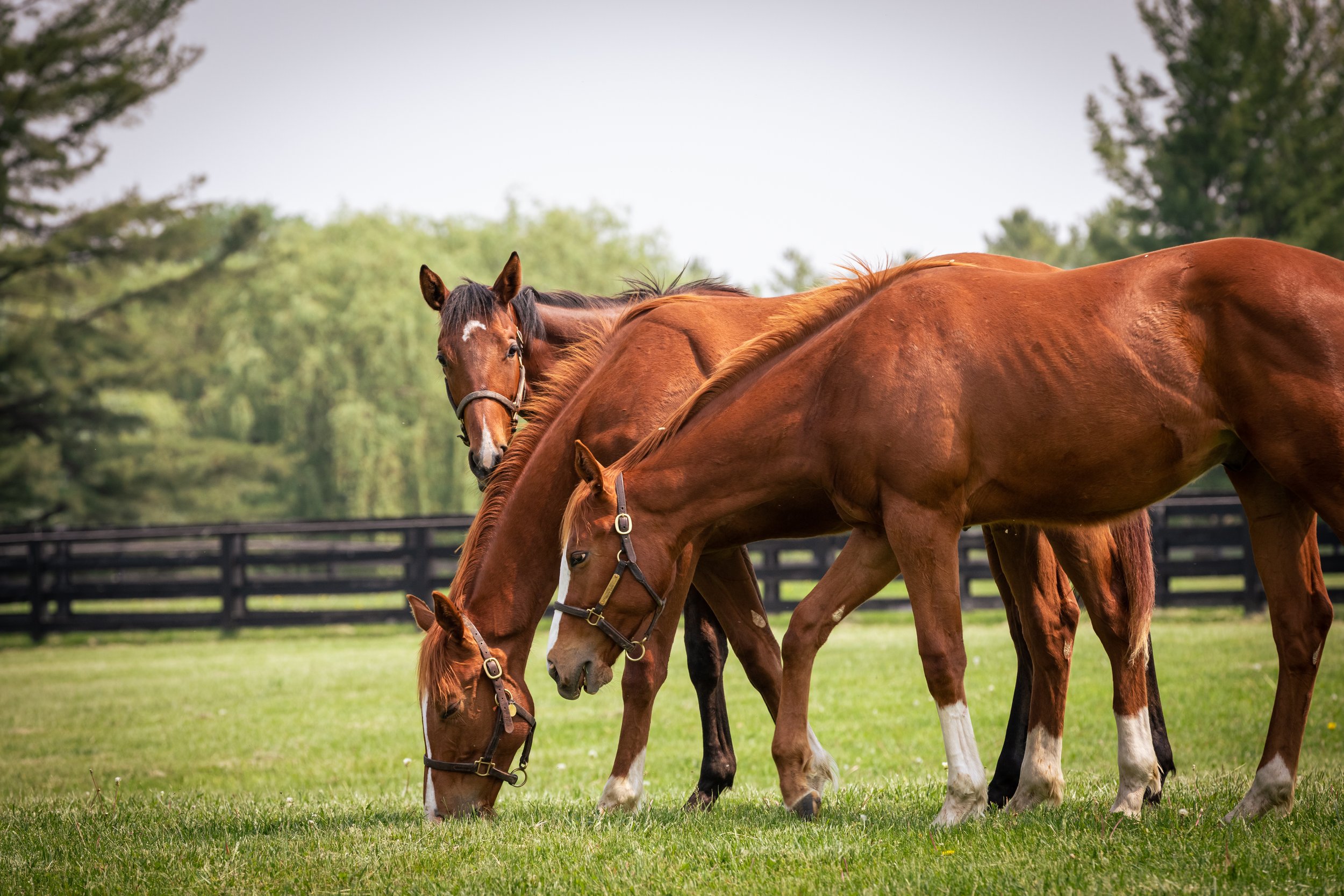State Incentives 2025 - The different state incentives for owners and breeders across North America
/Words - Ken Snyder
There’s an old saying, “the more things change, the more they are the same.” “Same,” in the case of Thoroughbred breeding, might actually be desirable, as in a leveling off of declining foal crops and short fields not getting any shorter.
“Change” is borderline cataclysmic. To wit, the possibility of decoupling racing at Gulfstream Park from the casino poses an existential threat to the racetrack, and dark clouds are beginning to loom over Santa Anita that’s not coming from the recent fires.
Still, the industry soldiers on.
It’s ironic that Kentucky, the hub of the Thoroughbred industry in North America, prospers with record-high purses and full to overflowing fields.
On the positive side for breeders and the industry as a whole, sale prices increased over 2023 in the weanling, yearling and broodmare divisions.
Keeneland’s September Yearling Sale, one major barometer of industry health, broke a cumulative sales record on the 10-day mark with sales topping $405 million, beating the prior record set in 2022.
Total yearling sales receipts across North America increased by just over 4% year on year with an average price also increasing just over 6% above ’23 averages. With an inflation rate of 2.89% at time of writing (down from the astronomical 9.06% in 2022) breeders could actually spend some of their sales revenues.
Naysayers, however, might snidely ask horse purchasers, “Where ya’ gonna’ race ‘em?”
The answer is states where racing venues operate with breeding incentives, thank you very much. For that matter, one of the states —New York– will boost state-bred incentives by 15% in 2027 in time for renovated Belmont Park. That would be 15% of $42.8 million (the total for 2024 New York-bred races) or a cool $6.4 million in 2027.
It seems, by the way, New York breeders are ahead of NYRA. The state actually experienced a foal crop increase from 1,446 to 1,524 at time of writing with full results not yet in… one of the few states with a plus number last year.
Also in the plus column is Pennsylvania. Foals numbers are projected to remain the same through 2023 to 2024. But with ten new stallions to hit the breeding sheds this year, including 2022 Kentucky Derby-winner Rich Strike, that number will likely increase in years to come. Rich Strike is one of approximately 45 stallions standing in Pennsylvania, according to Brian Sanfrantello, executive secretary of the Pennsylvania Horse Breeders Association.
The Keystone State might be the best place for breeding awards east of Kentucky. Last year, Warriors Reward topped stallion standings with $199,664. Add breeder totals to that and you have $927,518.
Speaking of Kentucky, there was $58.1 million last year in Owners’ Awards, but no stallion owners’ awards. But Kentucky has the Kentucky Thoroughbred Breeders’ Incentive Fund (KBIF). Awards since the fund’s inception in 2005 total over $200 million for winning eligible races.
The KBIF also solves a mystery for most racegoers in the Commonwealth in racing programs. It is common to see purse money added to by the “Kentucky Thoroughbred Development Fund.” That money comes from a 6% sales tax on breeding to a Kentucky stallion.
Peripheral but important to many small breeders in Kentucky for the coming season has been both Spendthrift Farm and Taylor Made Stallions cutting fees for six stallions and seven stallions respectively.
In total, fee reductions for thirteen damn good stallions went from a total of $205,000 last year to $124,750 in 2025. The cuts enable a wider market of breeders to pass through Spendthrift’s gates and might generate new blood in the sport.
In Florida the absence of a state income tax carries over to horse breeding. Unlike Kentucky, there is no tax on stallion seasons spending; horses purchased from an original breeder are sales-tax exempt; there is no personal state income or individual capital gains tax; and feed/animal health items are tax exempt.
The incentives require a journey into the proverbial weeds with different awards for Gulfstream and Tampa Bay Downs--some bonuses for a maiden special weight and allowance races but not handicap races; a percentage of a gross purse for winning a Black-Type stakes race; and bonuses on open overnight races.
The incentives vary between Gulfstream and Tampa. Suffice to say, according to the FTOBA’s website, Florida breeds - "Registered Florida Stallions”-- are eligible for “purse and race incentives plus the $1.2 million 2-year-old stakes series at Gulfstream Park.”
My guess is the trainer, jockey, and maybe even some owners just wait till they get their check from a track’s payroll clerk to know what they won.
Louisiana is much simpler. A horse sired by a Louisiana stallion and foaled in the state who finishes first, second or third at a Louisiana track earns a 25% award. (Purses with this award structure are capped at $200,000.) A horse sired out of state but foaled in Louisiana earns 20% for first, second, and third if the race is within the state. A “non-resident” filly or mare, can earn an award of 10% if sired by a Louisiana stallion and racing in the state. It’s win, place, and show for these horses, too. The smallest award is 9% to resident and non-resident mares sired by out-of-state stallions. This includes mares bred back to an out-of-state stallion.
Arkansas might be the easiest incentive program to understand. Stallion awards are to an owner of an Arkansas-bred stallion for first through fourth place for any race in North America. Awards are “calculated on the earnings of 1st through 4th place finishes.”
California’s breeding awards are not complicated but vary by race condition and purse size. It’s pretty straightforward (unlike the Kentucky Thoroughbred Breeders’ Incentive Fund) and is available in the state-by-state breakdown of incentives.

